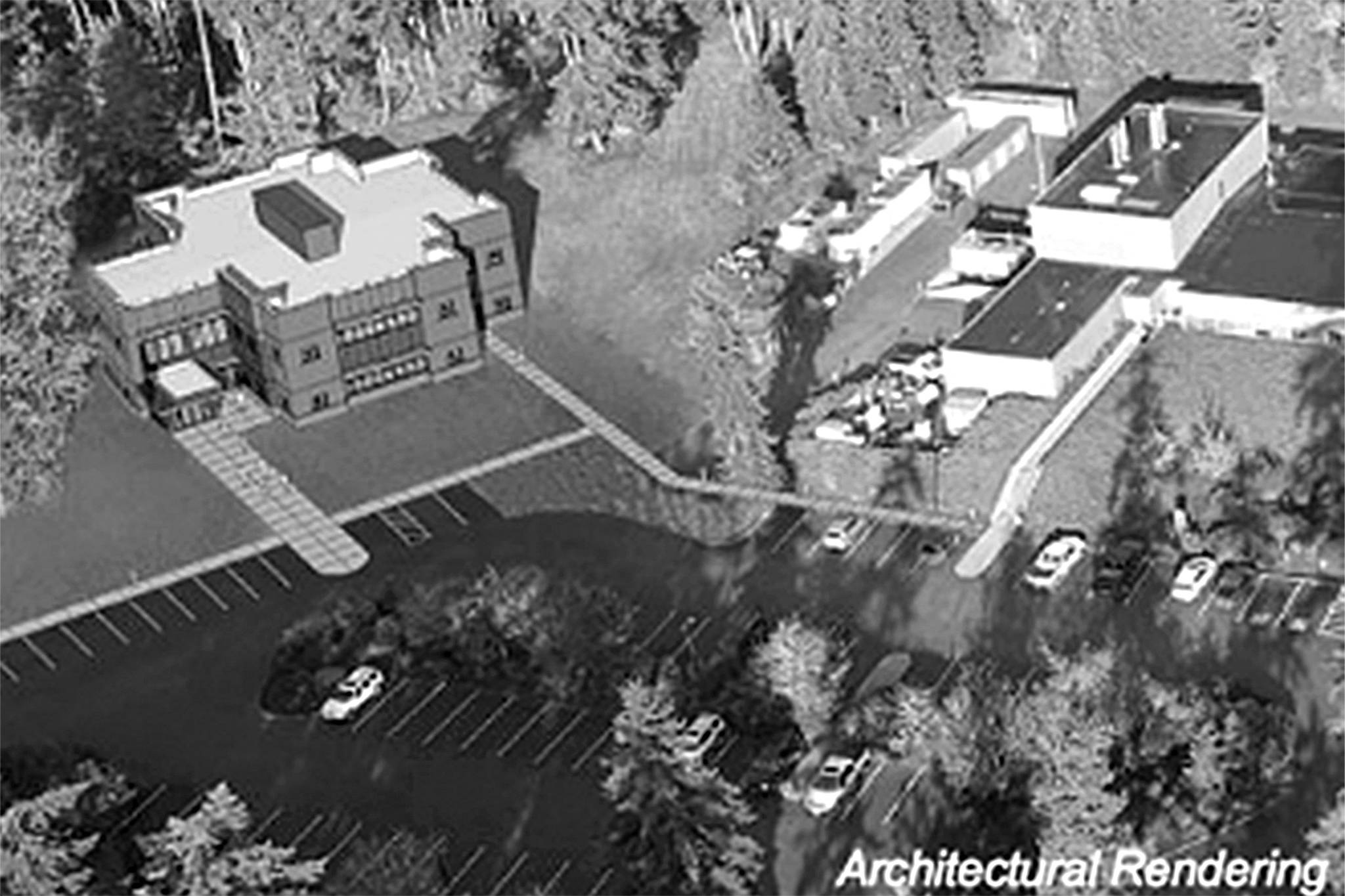SEQUIM — Broadening their organization’s scope with a new name, leaders with Pacific Northwest National Laboratory are promoting expansion and refurbishment at the Marine and Coastal Research Laboratory along Sequim Bay.
Millions of dollars in projects are planned for the lab in the near future — about $2 million annually — with more research and international collaboration anticipated through 2030 and beyond.
“One key takeaway is that we are continuously investing in our campuses and looking for new opportunities to enhance infrastructure and support research and advance science and technology,” said Tracy Spooner, PNNL’s campus development facilities manager.
She and other PNNL representatives conducted a virtual meeting recently for potential contractors and engineers, revealing some plans for the lab at 1529 W. Sequim Bay Road. Those plans include new buildings, remodeled and expanded laboratory space and a water/sewer connection to the City of Sequim.
Chris Dissing, manager of the Sequim lab’s facilities and infrastructure operations, said Sequim’s location with clean air and water is ideal for some of the lab’s many projects that include research on where to safely put wind turbines along coastlines, tagging fish to see how they react to underwater turbines, and finding the ideal places to grow algae for biofuel.
“We have capabilities to do a lot of cool things,” Dissing said.
“We’re set up for a lot of future work with a lot of cool capabilities, and we’re excited to capitalize on that.”
Some recent projects include new seawater pumps, floating docks, and remodeling the labs to be more energy efficient and modular.
“One thing about research is it’s going to change, so we’re trying to make it very easy for change,” Dissing said.
Projects
Soon, several projects are going to bid for contractors, Dissing reported on March 25, such as installation of new laboratories, firewalls and doors, multiple HVAC and cooling upgrades, seismic engineering and upgrades and asphalt repair.
Dr. Genevra Harker-Klimes, director for coastal sciences for the Sequim lab, said in a phone interview that the organization hopes to start on many of them by the summer, including starting to design and build new laboratory space.
Tracy Spooner, PNNL’s campus development facilities manager, said projects ranging one to three years out could cost between $1 million and $5 million.
PNNL staff will begin to set up designs this year and next to connect to Sequim’s sewer system by 2023 rather than using on-site facilities.
Spooner estimates the project will cost about $4 million.
Harker-Klimes said PNNL decided last year to connect to the city because its current water and sewer system limits how many people can be on site.
“It’s one of our priorities now,” she said.
Without it in place first, other future projects must wait, she said.
PNNL leaders also plan to build a new storage facility in three to four years for a cost of $3 million with a new access road to it from the main entrance for about $1 million.
Projects three to 10 years out are in early planning stages, Spooner said, with no cost estimates made public yet.
Those projects include: renovating existing labs in the upper and shoreline campuses; demolishing and building new specialized bays for deploying instrumentations, and building a conference/collaboration center.
Innovation
Harker-Klimes said interest in marine sciences has increased in recent years with more emphasis on marine energy and how it can boost other industries, along with looking at how to mitigate climate change in the ocean using clean fuel.
“There’s been much more interest in the last two to three years,” she said. “The focus has changed in how we can use the clean energy from the ocean.”
She added that the feasibility of wave and tidal energy has been more recognized, too, in the last four to five years.
“It’s become more immediate, and this is now the time, and it’s taking off,” Harker-Klimes said.
“(MCRL) is in a really good position and to bring in others.”
Between its five campuses and 86 buildings in Sequim, Richland, Seattle, Portland, Ore., and Washington, D.C., PNNL invests about $25 million in construction, Spooner said.
Sequim’s upcoming projects will follow the Richland campus’ plans for a $90 million Energy Sciences Center set to open in fall 2021 with 200 new workstations and 52 lab modules.
A planned Grid Storage Launchpad with 100 workstations and 30 lab modules is slated for a tentative cost of $75 million.
Greg Herman, PNNL’s director of minor construction and maintenance project management office, said they “think we have an exciting vision for the (Sequim area).”
“We’re already seeing positive impacts of that work now, but it’ll be a lot more in the future,” he said.
“It is exciting,” Harker-Klimes said. “There’s a lot of enthusiasm behind this.”
“We also want to make sure we’re partnering with the community in Sequim, and we want to make sure this helps Sequim as well as us.”
Contractors
Brianna Yi, PNNL’s small business program manager, recommends potential contractors interested in working with PNNL for construction and suppliers of goods and services should do the following:
• Register at ebs.pnnl.gov to submit qualifications for pre-approval for construction and services as a supplier.
• Become familiar with PNNL at pnnl.gov.
• Reach out and send a copy of a “Capability Statement” to the Small Business Program at small.business@pnnl.gov
• Make sure their SAM.gov account is up to date to validate contractor responsibility and verify socioeconomic status.
For more information about PNNL and the Marine and Coastal Research Laboratory, visit pnnl.gov/marine-and-coastal-research-laboratory.
Watch a recent video about the lab here.

